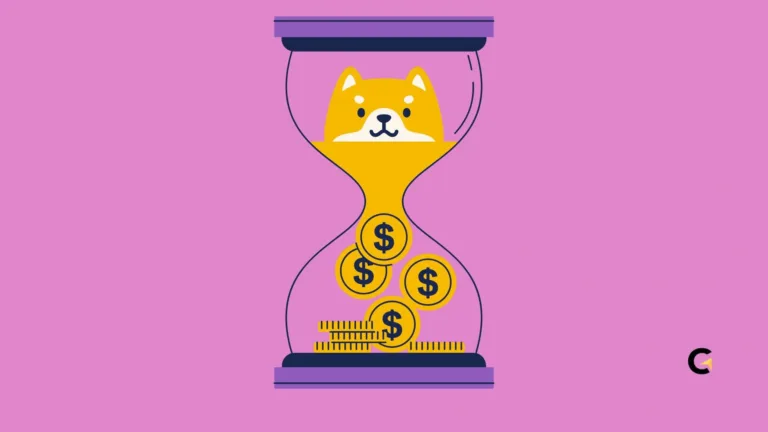10 Altcoins That Often Move in Sync with Bitcoin
Bitcoin is basically the king of the crypto castle. When it moves, the entire market pays attention.
Tons of altcoins—aka alternative coins—seem to have this spiritual connection with Bitcoin. When BTC goes up, they climb too. When it drops? They slump right along.
That connection, called correlation, isn’t just a fun stat—it’s actually super useful for anyone building a strategy, whether it’s diversification or hedging against volatility.
Quick Facts You Need to Know
Hide-
Ethereum (ETH) is at the top of the list, with a tight correlation score of +0.92—basically BTC’s twin.
-
Litecoin (LTC) and Ripple (XRP) are also in sync, at +0.87 and +0.72 respectively.
-
Layer-1 players like SUI, TRON (TRX), and Stellar (XLM) tend to follow Bitcoin closely during bull runs.
-
Chainlink (LINK) and BNB—big names in DeFi and smart contracts—also show strong monthly correlation at +0.78 and +0.76.
-
Cardano (ADA) and Polkadot (DOT) are a little looser, but still significantly tied to BTC.
So let’s break down the 10 altcoins that historically stick the closest to Bitcoin’s every move.
1. Ethereum (ETH): Bitcoin’s Loyal Sidekick
ETH isn’t just another altcoin—it’s basically Bitcoin’s right hand. With a 60-day rolling correlation of around +0.92, Ethereum moves almost step-by-step with BTC.
But this isn’t just because it’s the #2 coin by market cap. Ethereum runs the show when it comes to smart contracts, NFTs, DeFi, and more.
So when BTC sets the mood, ETH dances right along. And sometimes? It even leads the beat.
2. Litecoin (LTC) & Ripple (XRP): Old-School Legends Still in Sync
Litecoin is often called the “silver” to Bitcoin’s gold. It’s been around forever and has a correlation of +0.87—pretty high. Ripple’s XRP isn’t far behind, clocking in at +0.72.
These two are crypto veterans and tend to ride the same waves as BTC. Traders still love them as more affordable, liquid ways to get similar exposure to Bitcoin’s moves.
3. Layer-1s & DeFi Movers: Chainlink, BNB, and the Rising SUI
When it comes to smart contracts and DeFi ecosystems, Chainlink (LINK) and BNB are kind of a big deal.
With monthly correlations of +0.78 and +0.76, these two regularly move in sync with Bitcoin’s vibes.
LINK feeds real-world data into smart contracts (oracle life!), and BNB fuels the Binance Smart Chain. So when BTC is surging, they usually feel the hype too.
SUI, a newer Layer-1 contender, has also proven itself as a BTC follower during bullish seasons.
The exact numbers aren’t locked in, but its price action shows it’s been shadowing BTC closely—definitely one to keep an eye on.
4. TRON (TRX) & Stellar (XLM): Cross-Border Vibes, BTC-Linked Moves
TRON and Stellar are both heavily involved in global payments and fast transactions. So it’s no surprise that when the crypto market is pumping, these two often get caught in the upward drift.
While specific correlation stats weren’t disclosed, TRX and XLM are known to “ride the wave” with Bitcoin, especially during big bull runs.
Their price movements are often tied to how optimistic the market feels overall.
5. Cardano (ADA) & Polkadot (DOT): A Bit More Chill, Still Connected
Cardano and Polkadot are like the scholars of the blockchain world—more academic, more experimental. And while they still have a positive correlation with BTC, it’s not quite as intense.
Cardano (ADA) sits at +0.79, and Polkadot (DOT) at +0.63.
They’re more laid-back when reacting to Bitcoin volatility, but still close enough for portfolio builders who want balance without straying too far from BTC’s orbit.
Correlation Breakdown: Which Altcoins Are Truly in BTC’s Orbit?
| Altcoin | Symbol | Correlation (≈) | Source |
|---|---|---|---|
| Ethereum | ETH | 0.92 | FP Markets |
| Litecoin | LTC | 0.87 | FP Markets |
| Ripple | XRP | 0.72 | FP Markets |
| Chainlink | LINK | 0.78 | Binance |
| Binance Coin | BNB | 0.76 | Binance |
| TRON | TRX | High | CryptoQuant |
| Stellar | XLM | High | CryptoQuant |
| SUI | SUI | High | CryptoQuant |
| Cardano | ADA | 0.79 | Binance |
| Polkadot | DOT | 0.63 | J. Fin. Economics |
Why Correlation Even Matters in Crypto Investing
Correlation is basically your weather forecast for crypto. If you know which altcoins move with Bitcoin, you can:
-
Ride the momentum: When BTC pumps, you’ll know which altcoins are likely to join the party.
-
Manage your risk: If some altcoins have lower or negative correlation, they can act as portfolio “shock absorbers.”
-
Build smarter trading plays: Correlation data helps you make faster, more calculated trades.
-
Read market signals: Changes in correlation can hint at shifting market sentiment before it hits the headlines.
That said, don’t get too comfy. Correlation isn’t fixed—it shifts with time. Regulation, tech upgrades, hype cycles, or even one viral tweet can flip everything upside down.
Final Thoughts: Correlation is a Compass, Not a Crystal Ball
Knowing which altcoins move with Bitcoin gives you a powerful edge. But don’t rely on correlation like it’s some magic trick.
The crypto market is wild and unpredictable. Today’s best friend coin might take a different path tomorrow.
Use correlation as one piece of your strategy—mix it with fundamentals, trading volume, project updates, and solid risk management.
Correlation won’t guarantee gains, but it will give you clarity in an otherwise chaotic space.
Frequently Asked Questions (FAQs)
Why do altcoins tend to follow Bitcoin?
Bitcoin often drives market sentiment. When BTC pumps or dumps, many investors rebalance their portfolios, causing altcoins to follow.
Is correlation between BTC and altcoins always stable?
Not at all. Correlations change with market cycles, news events, and project updates. For example, ETH’s correlation loosened temporarily after major upgrades.
Can an altcoin break free from Bitcoin’s influence?
Yes. Some projects with strong fundamentals or major adoption moments (like a big partnership) can move independently of BTC.
How can traders use correlation to their advantage?
You can hedge: go long on BTC and short on an altcoin (or vice versa) based on correlation levels to play market volatility smartly.
What’s the biggest risk in relying on correlation?
False signals. High correlation doesn’t always mean guaranteed direction. Crypto is volatile and reacts to unpredictable events all the time.





